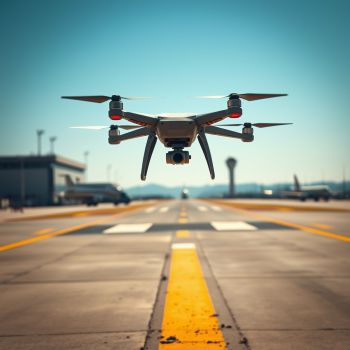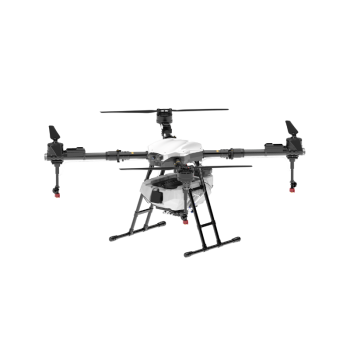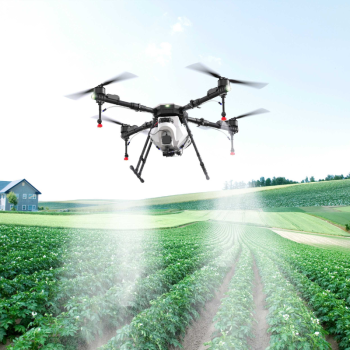The development direction of intelligent agricultural drones
Emerging Trends in the Development of Intelligent Agricultural Drones for Plant Protection
The integration of advanced technologies into agricultural drones is reshaping modern farming, offering precision, efficiency, and sustainability. As the demand for智能化 (intelligent) solutions grows, several key directions are emerging to enhance the capabilities of plant protection drones. These advancements focus on improving autonomy, data utilization, and environmental adaptability, addressing challenges faced by traditional farming methods.
Enhanced Autonomy Through AI and Machine Learning
One of the most significant trends is the shift toward fully autonomous operations powered by artificial intelligence (AI). Early drone models relied heavily on manual control or pre-programmed routes, limiting their effectiveness in dynamic environments. Modern systems now incorporate machine learning algorithms to analyze real-time data, such as crop health, weather patterns, and terrain variations. For instance, AI-driven drones can detect pest infestations or nutrient deficiencies by processing multispectral images, adjusting flight paths dynamically to target affected areas. This reduces chemical waste and ensures timely interventions, critical for maintaining crop yields.
Another aspect of autonomy is obstacle avoidance. Advanced sensors, including LiDAR and ultrasonic systems, enable drones to navigate complex landscapes without human intervention. These technologies detect obstacles like trees, power lines, or livestock, recalculating routes mid-flight to avoid collisions. As sensor accuracy improves, drones will operate more safely in crowded or irregularly shaped fields, expanding their applicability to diverse farming contexts.
Precision Application Technologies for Sustainable Farming
Sustainability is a driving force behind innovations in drone-based plant protection. Traditional methods often involve blanket applications of pesticides or fertilizers, leading to environmental harm and increased costs. Intelligent drones address this by delivering inputs with millimeter-level precision. For example, variable-rate application systems adjust the volume of chemicals based on real-time crop needs, minimizing overuse. Some drones even use electrostatic spraying techniques, ensuring droplets adhere more effectively to plant surfaces, reducing drift and runoff.
Water conservation is another priority. Drones equipped with thermal imaging cameras can identify areas of water stress, enabling targeted irrigation. By combining soil moisture data with weather forecasts, these systems optimize watering schedules, preventing both under- and over-irrigation. Such precision not only conserves resources but also enhances crop resilience against droughts or floods, aligning with global efforts to combat climate change.
Integration with IoT and Big Data for Holistic Farm Management
The rise of the Internet of Things (IoT) is transforming agricultural drones into nodes within broader smart farming ecosystems. Drones now serve as data collectors, transmitting information to cloud-based platforms where it’s analyzed alongside inputs from soil sensors, weather stations, and satellite imagery. This holistic approach allows farmers to monitor entire fields in real time, identifying trends that might indicate emerging issues. For instance, a sudden drop in soil moisture across multiple zones could signal a malfunctioning irrigation system, prompting immediate repairs.
Big data analytics further enhance decision-making by predicting outcomes based on historical and real-time data. Machine learning models can forecast pest outbreaks or disease spread, enabling proactive measures. Some platforms even offer prescriptive insights, recommending specific actions like adjusting planting densities or switching crop varieties. As connectivity improves, drones will increasingly operate as part of automated workflows, triggering actions like harvesting or fertilization without human input.
Advancements in Battery Technology and Energy Efficiency
Battery life remains a bottleneck for drone operations, particularly in large-scale farming. However, innovations in energy storage and management are extending flight times. Solid-state batteries, which offer higher energy density and faster charging, are being tested for agricultural use. These batteries could double current flight durations, reducing the need for frequent recharging and enabling drones to cover more ground per session.
Energy-efficient designs are also gaining traction. Some drones now feature solar panels or hybrid propulsion systems, combining electric motors with small generators for sustained operation. Additionally, optimized flight algorithms minimize power consumption by planning efficient routes and adjusting motor speeds based on payload requirements. These developments reduce operational costs and environmental impact, making drone-based plant protection more accessible to smallholder farmers.
Regulatory Evolution and Standardization for Safe Adoption
As intelligent drones become more prevalent, regulatory frameworks are adapting to ensure safety and compliance. Governments worldwide are establishing guidelines for drone operations, including flight altitudes, no-fly zones, and pilot certifications. For instance, many regions now require drones to be equipped with geofencing technology to prevent unauthorized access to sensitive areas like airports or residential zones.
Standardization is another critical area. Industry bodies are developing protocols for data sharing, interoperability, and cybersecurity to facilitate seamless integration with other smart farming tools. Clear standards also help manufacturers design drones that comply with global regulations, easing cross-border trade and adoption. As regulations mature, farmers will gain greater confidence in deploying intelligent drones, knowing they operate within legal and safety parameters.
By focusing on autonomy, precision, connectivity, energy efficiency, and regulatory compliance, the future of intelligent agricultural drones promises to revolutionize plant protection. These advancements will not only boost productivity but also promote sustainable practices, ensuring long-term viability for global food systems.




